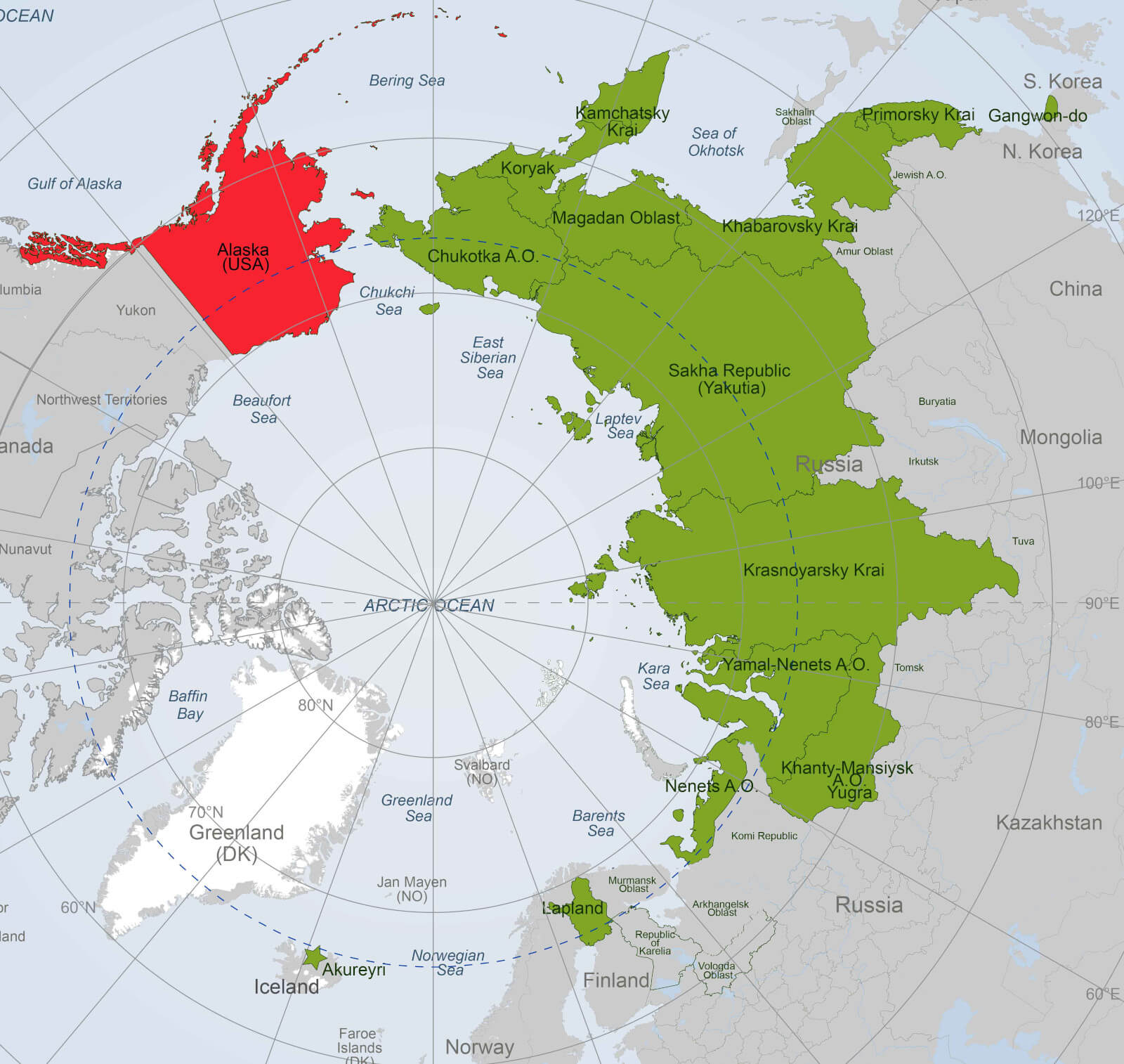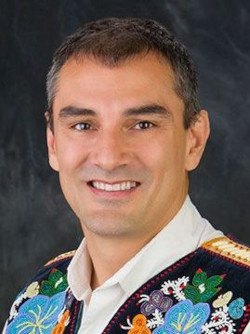The capital city of Alaska: Juneau.
Overview
Alaska is a U.S. state located in the northwest extremity of North America. The Canadian administrative divisions of British Columbia and Yukon border the state to the east, its most extreme western part is Attu Island, and it has a maritime border with Russia to the west across the Bering Strait. To the north are the Chukchi and Beaufort seas–the southern parts of the Arctic Ocean. The Pacific Ocean lies to the south and southwest. It is the largest state in the United States by area.
Juneau is the capital city of the state.
The population of Alaska is about 742,000, the area - 1,717,856 km2.
Alaska Flag and Seal


History
Numerous indigenous peoples occupied Alaska for thousands of years before the arrival of European peoples to the area. Linguistic and DNA studies done here have provided evidence for the settlement of North America by way of the Bering land bridge.
The first European vessel to reach Alaska is generally held to be the St. Gabriel under the authority of the surveyor M. S. Gvozdev and assistant navigator I. Fyodorov on August 21, 1732, during an expedition of Siberian cossak A. F. Shestakov and Belorussian explorer Dmitry Pavlutsky (1729–1735).
Another European contact with Alaska occurred in 1741, when Vitus Bering led an expedition for the Russian Navy aboard the St. Peter. After his crew returned to Russia with sea otter pelts judged to be the finest fur in the world, small associations of fur traders began to sail from the shores of Siberia toward the Aleutian Islands. The first permanent European settlement was founded in 1784.
Later, the Russian-American Company carried out an expanded colonization program during the early-to-mid-19th century.
Sitka, renamed New Archangel from 1804 to 1867, on Baranof Island in the Alexander Archipelago in what is now Southeast Alaska, became the capital of Russian America. It remained the capital after the colony was transferred to the United States. The Russians never fully colonized Alaska, and the colony was never very profitable. Evidence of Russian settlement in names and churches survive throughout southeast Alaska.
William H. Seward, the United States Secretary of State, negotiated the Alaska Purchase (also known as Seward's Folly) with the Russians in 1867 for $7.2 million. Alaska was loosely governed by the military initially, and was administered as a district starting in 1884, with a governor appointed by the President of the United States. A federal district court was headquartered in Sitka.
For most of Alaska's first decade under the United States flag, Sitka was the only community inhabited by American settlers. They organized a "provisional city government," which was Alaska's first municipal government, but not in a legal sense. Legislation allowing Alaskan communities to legally incorporate as cities did not come about until 1900, and home rule for cities was extremely limited or unavailable until statehood took effect in 1959.
Features
Northern Alaska’s climate is Arctic, interior is subarctic with temperature extremes and coastal areas have oceanic type of climate. Many active volcanoes are found in the Aleutians and in coastal regions. Alaska has more than three million lakes. Marshlands and wetland permafrost cover 188,320 square miles (487,747 km2) (mostly in northern, western and southwest flatlands). Glacier ice covers some 16,000 square miles (41,440 km2) of land and 1,200 square miles (3,110 km2) of tidal zone.
According to the 2010 United States Census, Alaska had a population of 710,231. In terms of race and ethnicity, the state was 66.7% White (64.1% Non-Hispanic White), 14.8% American Indian and Alaska Native, 5.4% Asian, 3.3% Black or African American, 1.0% Native Hawaiian and Other Pacific Islander, 1.6% from Some Other Race, and 7.3% from Two or More Races. Hispanics or Latinos of any race made up 5.5% of the population.
Economy
The oil and gas industry dominates the Alaskan economy, with more than 80% of the state's revenues derived from petroleum extraction. Alaska's main export product (excluding oil and natural gas) is seafood, primarily salmon, cod, Pollock and crab.





